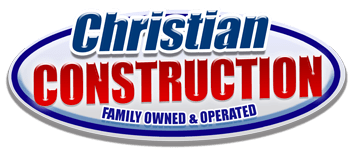We talk often at Christian Construction about the many different roofing materials. But what many people do not realize is that roofs come in many different styles as well. Most of these styles are created when the home is first built, and while they can be remodeled, they are rarely changed. With that in mind, it is still interesting to understand the different roof styles available – including their names and what the benefits of each one may be.
The Shapes and Designs of Roofs
Unless you spend a lot of time on roofs, you may not be aware just how different they all can be. Here in Staten Island, we have properties that are a hundred years old and properties built last week. That means that there are many unique styles that you may see if you were to view Staten Island from above. Some of the most common roofing styles go by the following names:
- Gable Roof – A gable roof is one of the most common roof styles in residential buildings. It features two sloping sides that meet at a ridge, forming a triangular shape. Gable roofs are known for their simplicity and provide good water runoff.
- Hip Roof – A hip roof has slopes on all four sides, with each side coming together at a ridge. This design offers increased stability and can withstand high winds better than some other roof styles. Hip roofs are commonly seen in many residential areas of Staten Island.
- Mansard Roof – The Mansard roof, also known as a French roof, has a distinct design characterized by two slopes on each side. The lower slope is steeper than the upper slope, which creates additional space in the upper floor or attic. Mansard roofs are often seen in older residential homes in Staten Island.
- Gambrel Roof – The gambrel roof style features two sides with two different slopes on each side. The lower slope has a steeper pitch, while the upper slope is less steep. This design is commonly associated with barns but can also be found in residential homes in Staten Island.
- Flat Roof – While not as common in residential areas (these are traditionally used on commercial properties), flat roofs are sometimes seen on certain homes in Staten Island. As the name suggests, flat roofs have a horizontal surface and offer simplicity and ease of construction. They may require additional maintenance to ensure proper water drainage.
- Jerkinhead Roof – The Jerkinhead roof, also known as a clipped gable roof, is a variation of the gable roof style. It features gable ends that are partially clipped, creating a unique look that combines elements of both gable and hip roofs. This style is uncommon here in Staten Island, but it does exist if you look for it.
- Dutch Gable Roof – The Dutch gable roof combines elements of a gable roof and a hip roof. It features a gable end with a small hip roof on top. This style offers a visually appealing design and can be found in some residential areas of Staten Island.
- Bonnet Roof – The bonnet roof, also known as a kick-up roof or a half-hip roof, has two slopes on all four sides. The lower slope extends beyond the upper slope, providing additional coverage and protection. This style is less common but can be seen in certain residential homes in Staten Island.
Other roof styles include sawtooth roofs, saltbox roofs, curved roofs, and pyramid roofs, but these are not that common in our region.
Does the Style of Roof Affect Roofing Materials?
The style of roof can have an effect on roofing materials, but the effect is fairly small. Almost all roofing types are appropriate for asphalt shingles, metal roofing, and tiles, although some options do look and perform better than others. The only obvious exception is flat roofing, which is more common in commercial properties and uses modified bitumen, EPDM (rubber) roofing, or PVC/TPO membranes because of issues with moisture and rain.
No matter your roof, Christian Construction is here to help you with your roofing needs both large and small. Contact us today to learn more.
